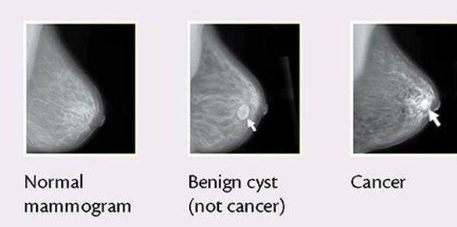By : Geraldus Sigap

Breast cancer remains a frightening disease for many women. But even more dangerous than the disease itself are the myths that delay early detection and proper treatment. The earlier breast cancer is found, the greater the chances of recovery. Here are some of the most common myths in society, along with medical facts you need to know:
Myth 1: Breast Cancer Only Happens to Women
Fact:
While it’s more common in women, men can also develop breast cancer, though their risk is much lower. Men should still be vigilant if they notice lumps or changes in their breast tissue.
Myth 2: No Family History Means I’m Safe
Fact:
Around 85% of breast cancer cases occur in women with no family history. Other factors such as age, lifestyle, and hormones also influence risk. This means everyone should have regular screenings, even without a family history.
Myth 3: All Breast Lumps Are Cancerous
Fact:
Not all lumps in the breast are cancer. Many are benign, such as cysts or fibroadenomas. However, all lumps should still be checked by a healthcare provider through clinical exams and imaging like ultrasound or mammography.
Myth 4: Mammograms Can Cause Cancer
Fact:
The radiation from mammograms is very low and does not cause cancer. Mammography is one of the best tools for detecting breast cancer early, even before symptoms appear.
Myth 5: Breast Cancer Always Appears as a Lump
Fact:
Breast cancer can also manifest as changes in the breast’s shape or size, skin dimpling (like an orange peel), nipple retraction, or unusual nipple discharge. Any of these signs should be checked by a doctor immediately.
Early Detection Saves Lives
For younger women (typically under 40 years old), breast ultrasound is the first recommended screening tool because their breast tissue is usually denser, making mammography less accurate. As age increases, or for women with higher risk factors, mammography or breast MRI may be considered as part of routine screening.
Here is one of the example of mammogram examination results:

Figure 1. Results of the mammogram
Normal mammogram: breast tissue without visible masses or abnormal calcifications.
Mammogram with positive findings: shows irregular masses, clusters of microcalcifications, or architectural distortions that may suggest cancer.
For those at high risk, additional tests such as breast MRI may be recommended. Believing in myths can delay diagnosis and reduce the chance of recovery. By knowing the correct medical facts, you can protect yourself and your loved ones from unnecessary risk. If you have concerns about your breasts, a family history of cancer, or want to start routine screening, the surgical specialists at RS Abdi Waluyo are ready to assist with complete and accurate screening facilities. Call 021-3144989 or book an appointment online today for consultation and further examination.
FAQ
- Can men get breast cancer?
Yes. Although rare, men have breast tissue and can develop breast cancer, especially with a family history or certain genetic conditions.
- If I have no family history, do I still need breast cancer screening?
Yes. About 85% of breast cancer cases occur in women without a family history. Routine screening is still essential for early detection.
- Are all breast lumps dangerous?
Not always. Many lumps are benign, like cysts or fibroadenomas. However, all lumps should be examined by a doctor to confirm the cause.
- Is mammography dangerous because of radiation?
No. Mammography uses low-dose radiation that is safe and highly effective for detecting cancer early, even before symptoms.
- Does breast cancer only appear as a lump?
No. It can also appear as changes in breast shape, skin color, nipple inversion, or unusual discharge.
Resource :
- Menon G, Alkabban FM, Ferguson T. Breast Cancer. [Updated 2024 Feb 25]. In: StatPearls [Internet]. Treasure Island (FL): StatPearls Publishing; 2025 Jan-. Available from: https://www.ncbi.nlm.nih.gov/books/NBK482286/
- Łukasiewicz, S., Czeczelewski, M., Forma, A., Baj, J., Sitarz, R., & Stanisławek, A. (2021). Breast Cancer-Epidemiology, Risk Factors, Classification, Prognostic Markers, and Current Treatment Strategies-An Updated Review. Cancers, 13(17), 4287. https://doi.org/10.3390/cancers13174287
- A Survey on Machine Learning Approaches used in Breast Cancer Detection [Internet]. ResearchGate; 2022 [cited 2025 Oct 1]. Available from: https://www.researchgate.net/publication/363740454_A_Survey_on_Machine_Learning_Approaches_used_in_Breast_Cancer_Detection
